The congregation building of Al-Aqsa Mosque is referred to as Jami al-Masjid al-Aqsa or al-Masjid al-Qibli. It is located at the southern end of the complex, and is thought to be the original site of David's sanctuary.The exact date of construction of the mosque is under some contention, with several differing opinions as to who built the structure and when. There is a more comprehensive rundown of the history available in wikipedia were the article discusses the several disputed claims over the construction.
As an example, the architectural historian K. A. C Creswell sites the example of a Gallic monk who travelled to Palestine in 679, and notes that it is probable, from his writings, that a wooden structure had been constructed at the site, with a capacity of 3,000 worshipers somewhere on the Temple Mount.Between 748 and 780 the mosque was destroyed by earthquakes three times, being subsequently rebuilt each time. Finally, in 1033, there was another powerful earthquake, which severely damaged the mosque. Caliph Ali Az Zahir used this event to rebuild and completely renovated the mosque, he built the four arcades of the hall and the central aisle, which now serves as the foundation of al-Aqsa mosque.
After Jerusalem was captured during the first crusade in 1099, the Al Aqsa Mosque was used as a royal palace by the kings of Jerusalem. The Crusaders who believed the mosque was built on the ruins of King Solomon's Temple, referred to the building as the "Templum Salomonis". The building remained as such, until Saladin re-took the city in 1187.
The mosque consists today of a seven bay hypo style hall with several additional small halls to the west and east of the southern section of the building. It was capped with a silver dome, but today is capped with lead sheets.
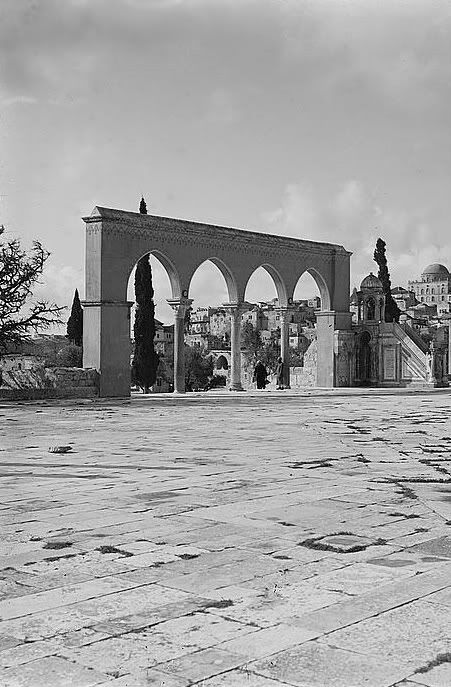 The tour of the Al Aqsa Congregational building begins in the courtyard in front of the Colonnade Of Umar (Umar ibn al-Khattāb, 581-644), to the right of the colonnade you can also see the pulpit or minbar of umar.
The tour of the Al Aqsa Congregational building begins in the courtyard in front of the Colonnade Of Umar (Umar ibn al-Khattāb, 581-644), to the right of the colonnade you can also see the pulpit or minbar of umar.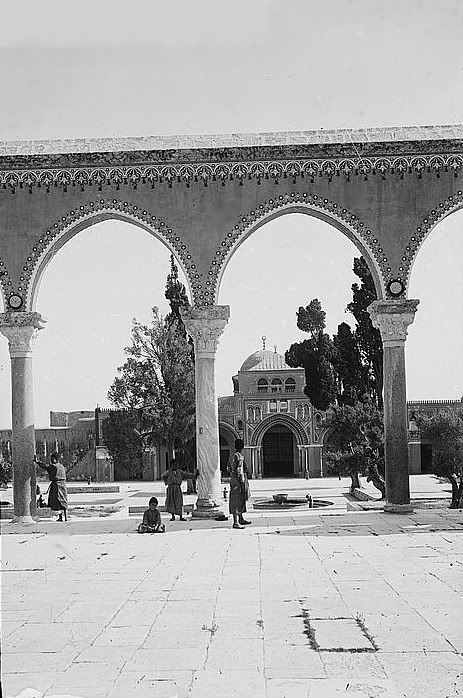 Moving closer to the colonnade you can see the detailing around the arches in this 1936 photograph. Beyond the arches you can just make out the Al-Aqsa ceremonial Fountain and washing station. To the left of the building you can see a staircase, in later images it is absent and was most likely damaged in the earthquakes that damaged much of the mosque in 1927 and 1936.
Moving closer to the colonnade you can see the detailing around the arches in this 1936 photograph. Beyond the arches you can just make out the Al-Aqsa ceremonial Fountain and washing station. To the left of the building you can see a staircase, in later images it is absent and was most likely damaged in the earthquakes that damaged much of the mosque in 1927 and 1936.
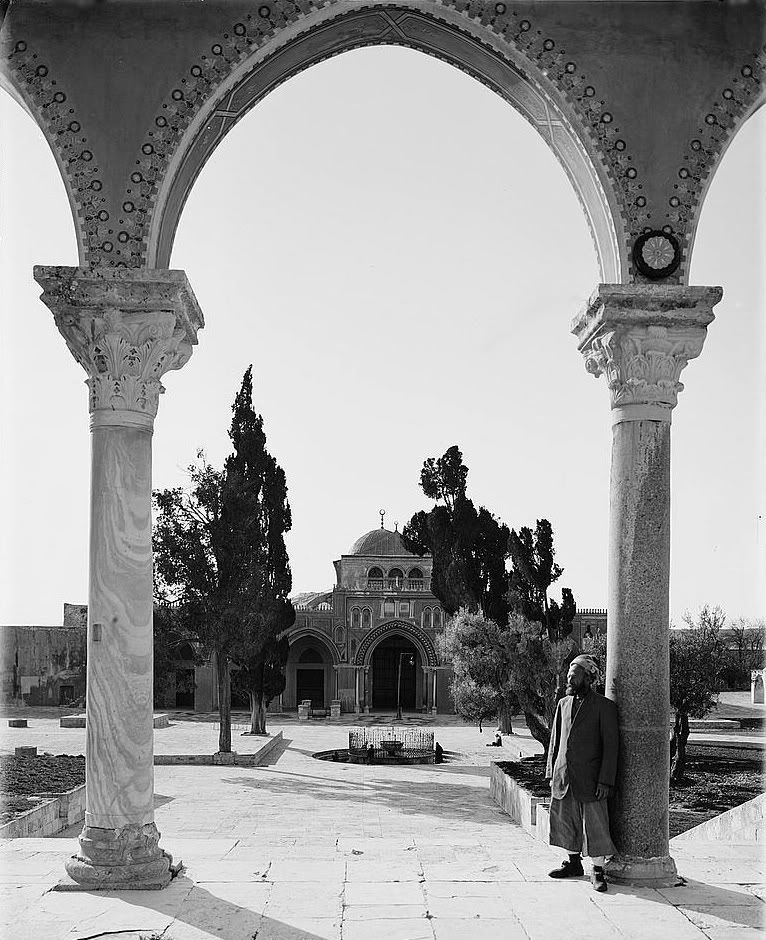 Standing under the Corinthian columns of the colonnade, you can see more detailing around the arches. You can see that the fountain has acquired a metal latticework guard around its edge, you can also see people using the washing stations.
Standing under the Corinthian columns of the colonnade, you can see more detailing around the arches. You can see that the fountain has acquired a metal latticework guard around its edge, you can also see people using the washing stations.
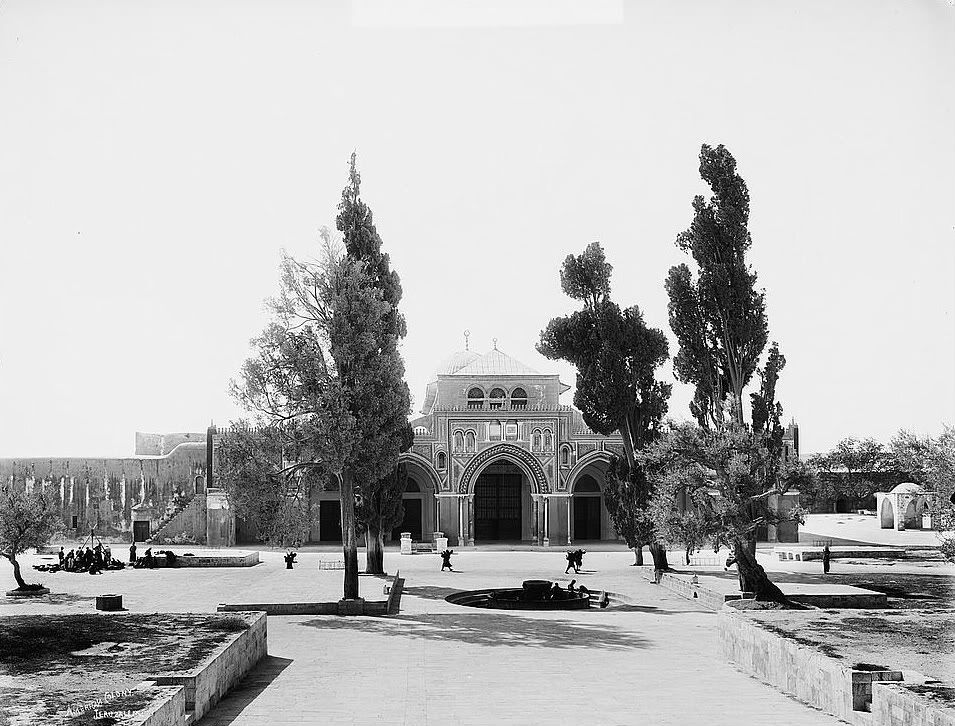 Looking through the colonnade you can see your first full view of the congregational building. This view from the twenties shows the congregational building before any damage from the two earthquakes of 1927 and 1936, and before any of the restoration and extention work that was done through out the 1920's to the 1940's.
Looking through the colonnade you can see your first full view of the congregational building. This view from the twenties shows the congregational building before any damage from the two earthquakes of 1927 and 1936, and before any of the restoration and extention work that was done through out the 1920's to the 1940's.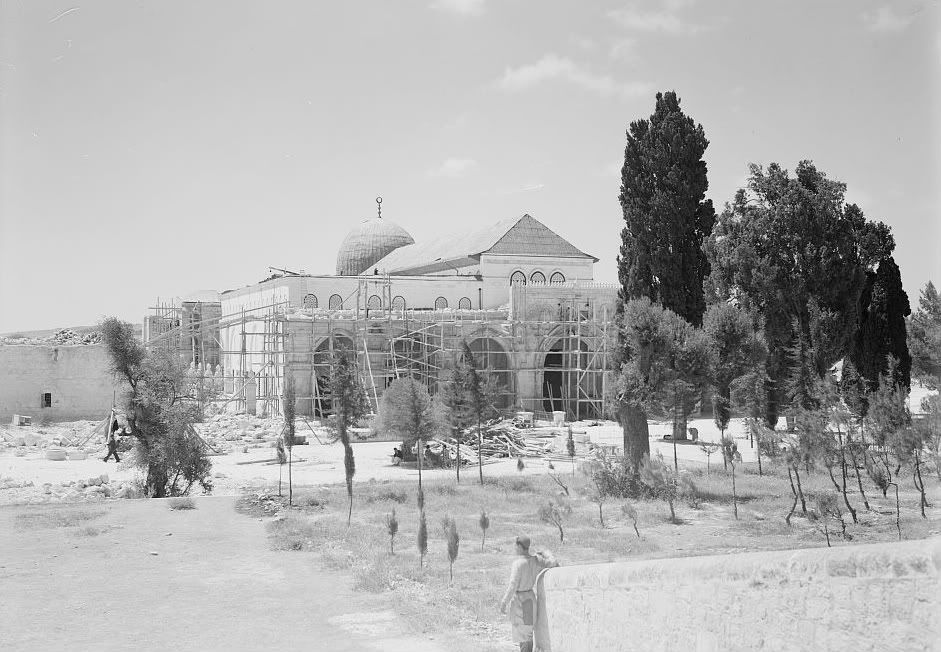 Passing through the colonnade and moving to the left, this 1943 picture shows how extensively the mosque was repaired and renovated. Between 1924 and 1925, the mosque's foundations were reinforced and the southern wall and central nave were rebuilt. After the two earthquakes of 1927 and 1936 more renovations and repairs were carried out.
Passing through the colonnade and moving to the left, this 1943 picture shows how extensively the mosque was repaired and renovated. Between 1924 and 1925, the mosque's foundations were reinforced and the southern wall and central nave were rebuilt. After the two earthquakes of 1927 and 1936 more renovations and repairs were carried out.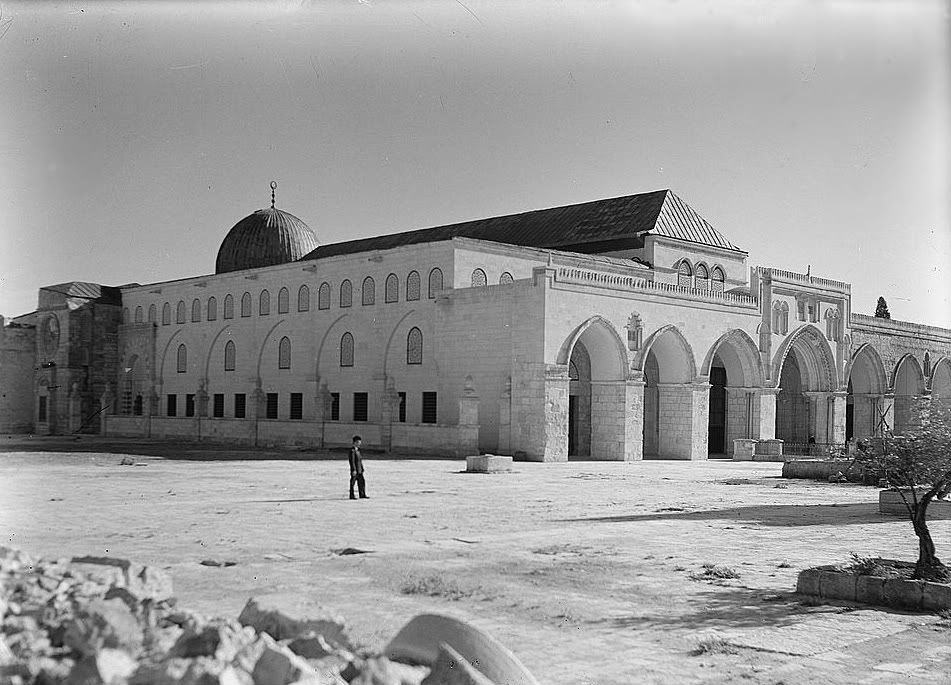 Standing a little further left, while looking back at the mosque, you can get a good idea of the size and layout of the building. It is capable of holding 5000 worshipers. You can see the dome on the roof towards the rear of the building. In 1969, the dome was reconstructed in concrete and covered with aluminium sheeting, in 1983 the aluminum outer covering was replaced with lead to match the original design by az-Zahir. At the bottom of the picture you can just make out building rubble from the renovations to the mosque.
Standing a little further left, while looking back at the mosque, you can get a good idea of the size and layout of the building. It is capable of holding 5000 worshipers. You can see the dome on the roof towards the rear of the building. In 1969, the dome was reconstructed in concrete and covered with aluminium sheeting, in 1983 the aluminum outer covering was replaced with lead to match the original design by az-Zahir. At the bottom of the picture you can just make out building rubble from the renovations to the mosque.
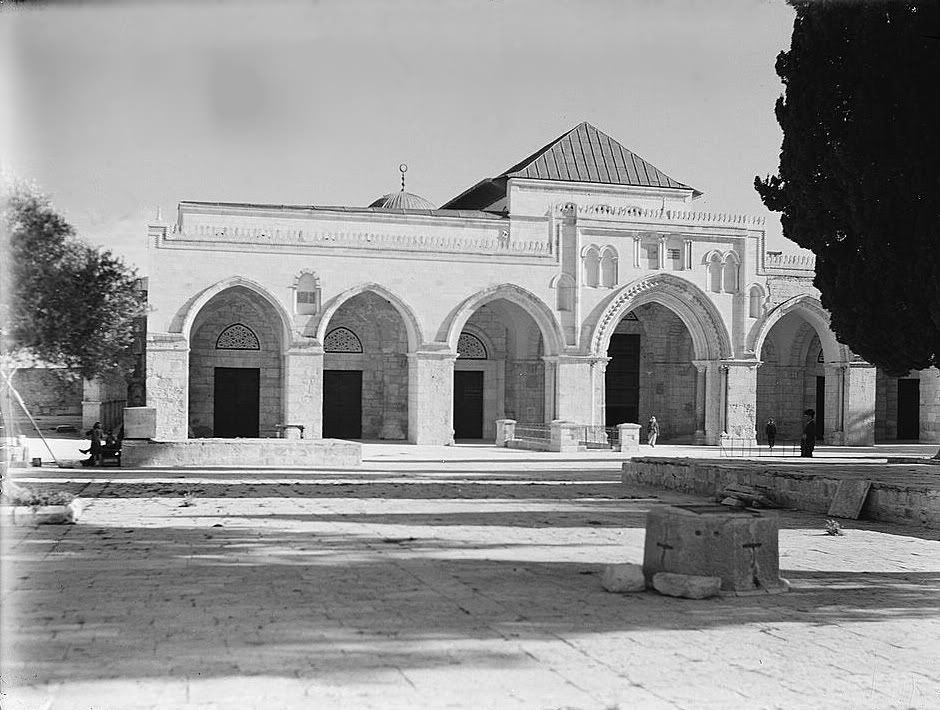 Walking now towards the main entrance you can see a closer view of the front facade, note the mix of crusader and arabesque features on the facade. The northern porch was extended in the crusader period as well as the addition of a church to the building.
Walking now towards the main entrance you can see a closer view of the front facade, note the mix of crusader and arabesque features on the facade. The northern porch was extended in the crusader period as well as the addition of a church to the building.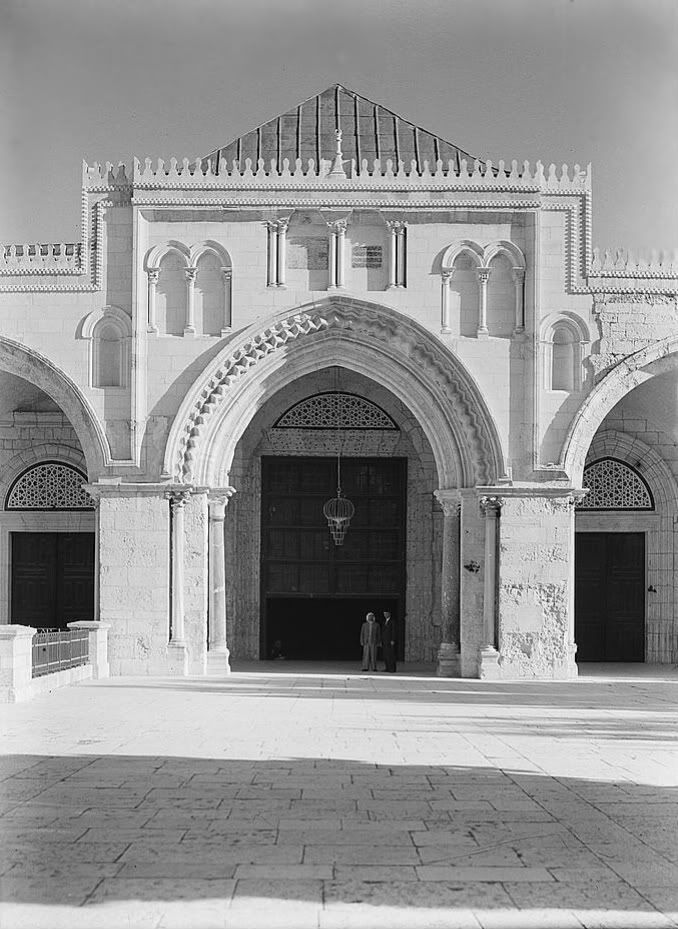 The main entrance to the mosque congregational building. The three central arches were constructed during the crusader period by the Templar's in the Romanesque style. You may note the blind arches. This more sturdy decorative styling around the arches, denotes a heavier European styling that was popular at the time.
The main entrance to the mosque congregational building. The three central arches were constructed during the crusader period by the Templar's in the Romanesque style. You may note the blind arches. This more sturdy decorative styling around the arches, denotes a heavier European styling that was popular at the time.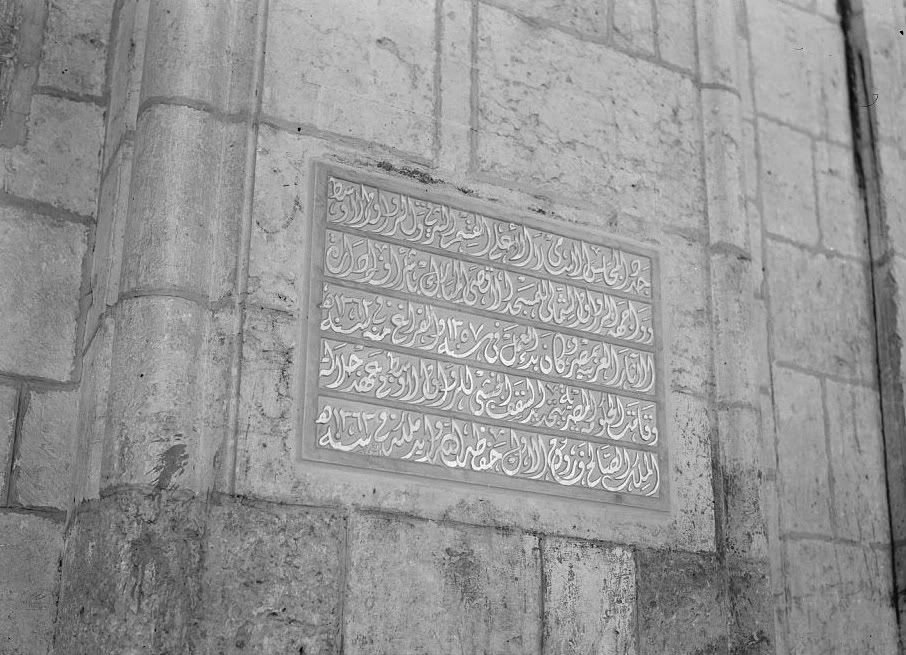 A ceremonial plaque at the entrance.
A ceremonial plaque at the entrance.
 Moving inside the main entrance, In this 1920's photograph, you can see across the three isles of the mosque congregational building. You can also see the differing styles of column and the connecting raving.
Moving inside the main entrance, In this 1920's photograph, you can see across the three isles of the mosque congregational building. You can also see the differing styles of column and the connecting raving. Looking down the central aisle in this early picture, you can see the decorated walls and hanging lamps. Note also the new roof to the central aisle, funding for which was given by King Farouk of Egypt. You may also note the Corinthian columns along the aisles, which seem out of context with the building.
Looking down the central aisle in this early picture, you can see the decorated walls and hanging lamps. Note also the new roof to the central aisle, funding for which was given by King Farouk of Egypt. You may also note the Corinthian columns along the aisles, which seem out of context with the building.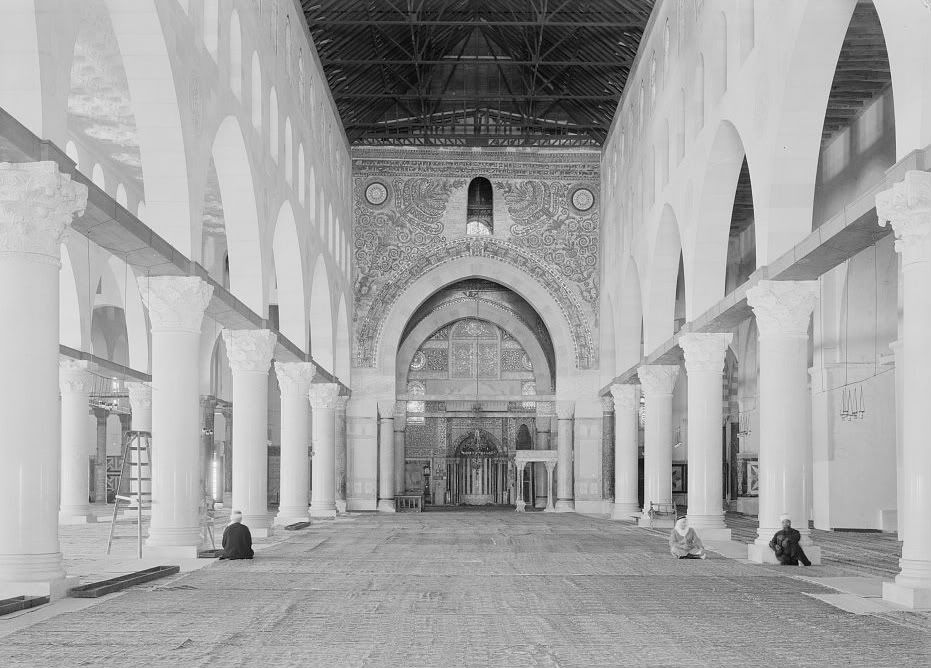 Stepping back slightly, you can see in this later picture that the walls have been whitewashed, but that the new ceiling has not yet been fitted.
Stepping back slightly, you can see in this later picture that the walls have been whitewashed, but that the new ceiling has not yet been fitted.
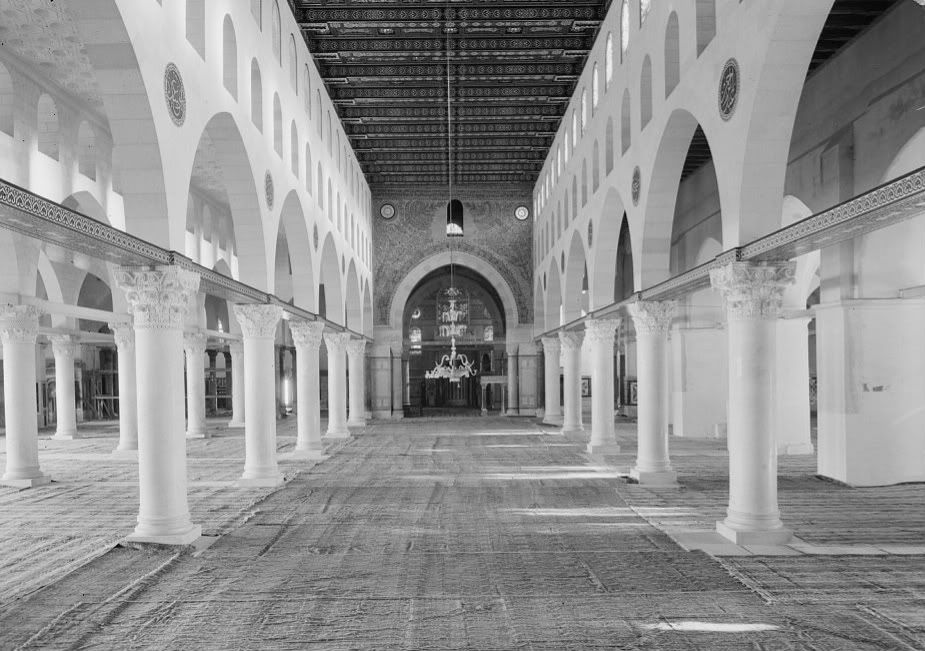 Moving closer to the mihrab you can see more detail, in this photograph the roof is not yet restored but the process of whitewashing the walls has begun and the ceiling has been added.
Moving closer to the mihrab you can see more detail, in this photograph the roof is not yet restored but the process of whitewashing the walls has begun and the ceiling has been added.
 In this closer representation, you can see the ornate tiling on the central wall around the mihrab, to the left of the mihrab you can just make out the minbar. Looking up you can see that the new roof is not yet in situ, allowing you to make out details of its construction.
In this closer representation, you can see the ornate tiling on the central wall around the mihrab, to the left of the mihrab you can just make out the minbar. Looking up you can see that the new roof is not yet in situ, allowing you to make out details of its construction. Moving closer you can now see the mimbar or pulpit, The Imam stands on the minbar to give his Friday sermons. This particular minbar was donated to the mosque by Saladin in the 12th century after his capture of the city, the minbar itself was destroyed in an arson attack at the mosque in 1969.
Moving closer you can now see the mimbar or pulpit, The Imam stands on the minbar to give his Friday sermons. This particular minbar was donated to the mosque by Saladin in the 12th century after his capture of the city, the minbar itself was destroyed in an arson attack at the mosque in 1969.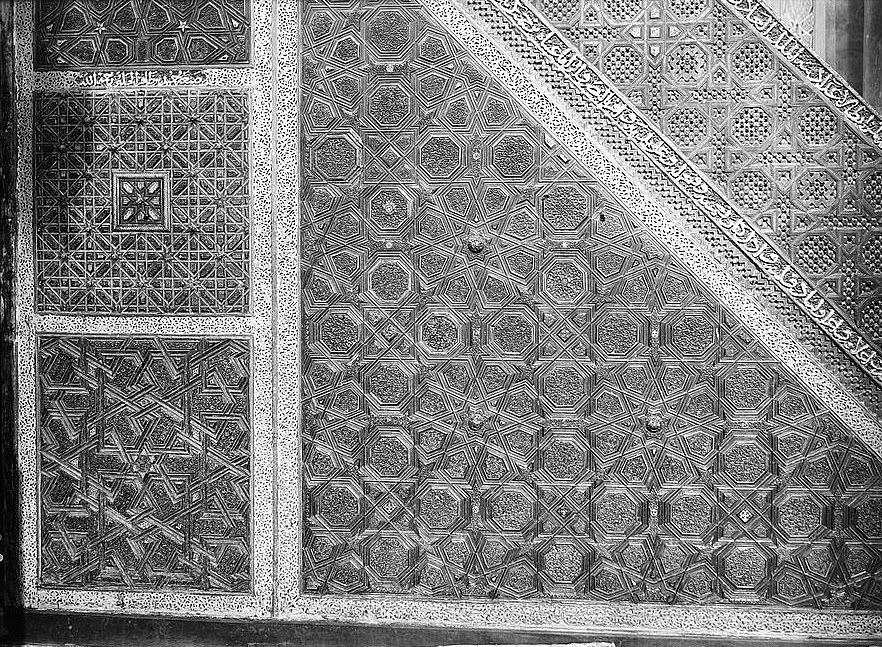 In this close up photograph you can see the intricate carvings and latticework that make up the minbar. The decoration is composed of interlocking cedar wood with ivory detailing.
In this close up photograph you can see the intricate carvings and latticework that make up the minbar. The decoration is composed of interlocking cedar wood with ivory detailing.
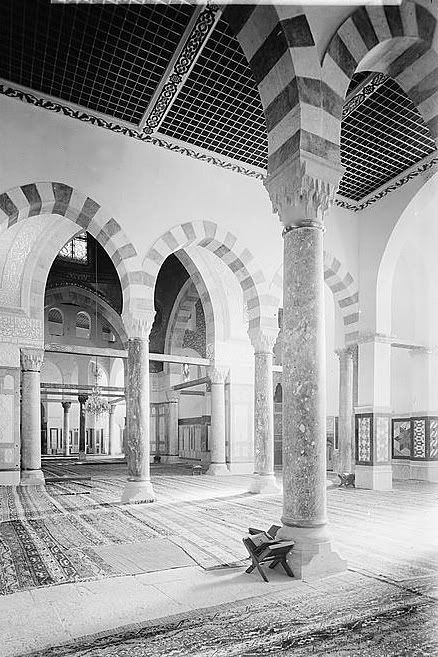 Moving on again, in this photograph from the 1930's, you can see the new west wing extention.
Moving on again, in this photograph from the 1930's, you can see the new west wing extention.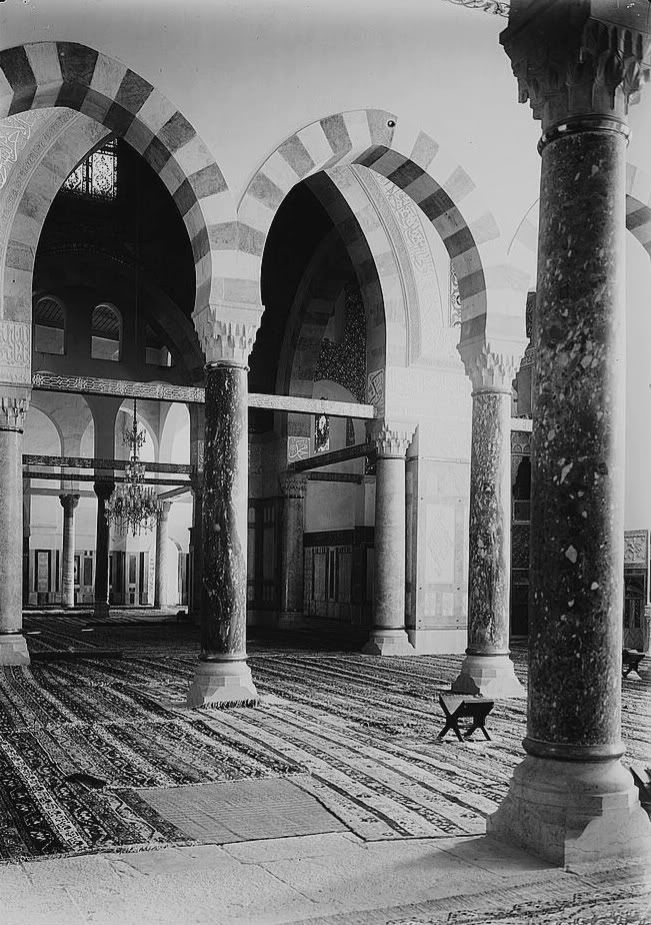 Looking now to the west, this picture shows the south west nave of the building, again you can see the contrasting styles that have developed from the constant restoration.
Looking now to the west, this picture shows the south west nave of the building, again you can see the contrasting styles that have developed from the constant restoration.
Walking back through the southwest nave to the central aisle you can see areas damaged by earthquakes and signs of repair.
 Looking straight up you can see the full detailing around the dome and surrounding pillars.
Looking straight up you can see the full detailing around the dome and surrounding pillars. Now moving back to the central isle, you can see from this later photograph that the walls and pillars have been completely whitewashed.
Now moving back to the central isle, you can see from this later photograph that the walls and pillars have been completely whitewashed.
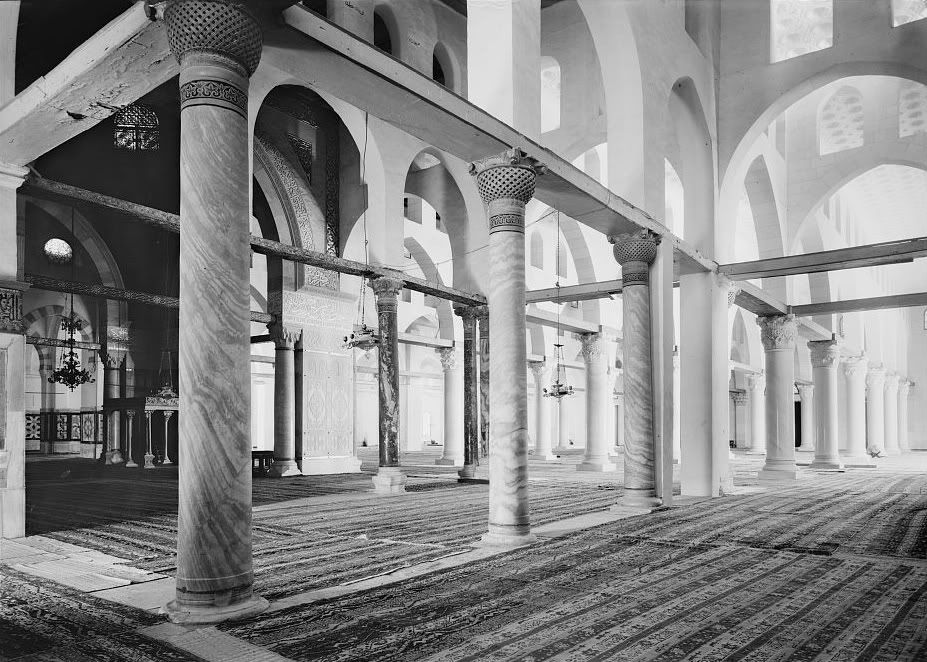 Looking back to the entrance to the congregational building, you can see from this photograph from the 1940's the changes that are being applied to the internal features.
Looking back to the entrance to the congregational building, you can see from this photograph from the 1940's the changes that are being applied to the internal features.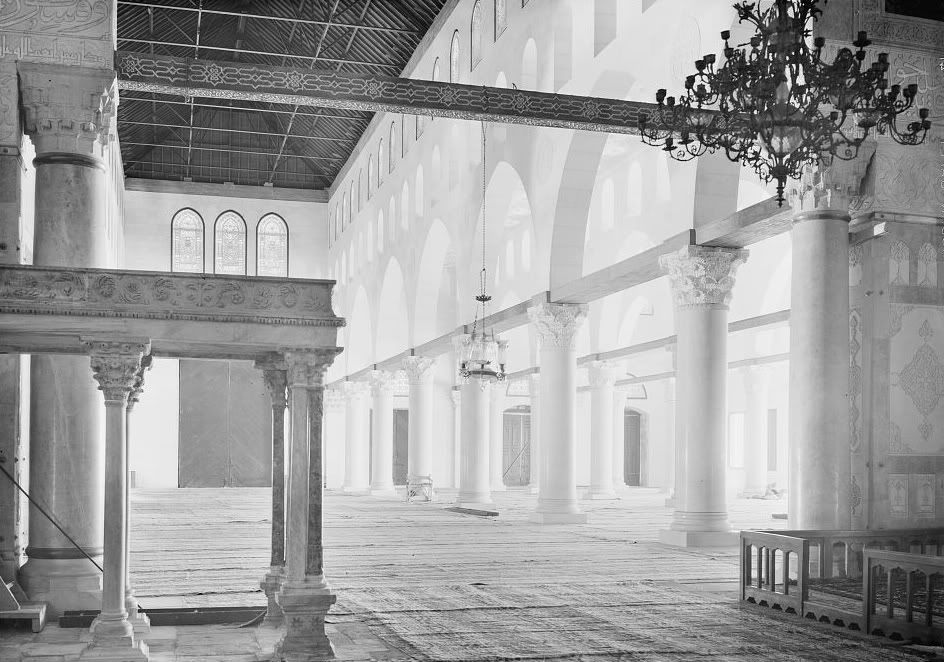 Now moving forwards you are heading for the entrance to the building and out into the courtyard were the tour began.
Now moving forwards you are heading for the entrance to the building and out into the courtyard were the tour began.
More Information.
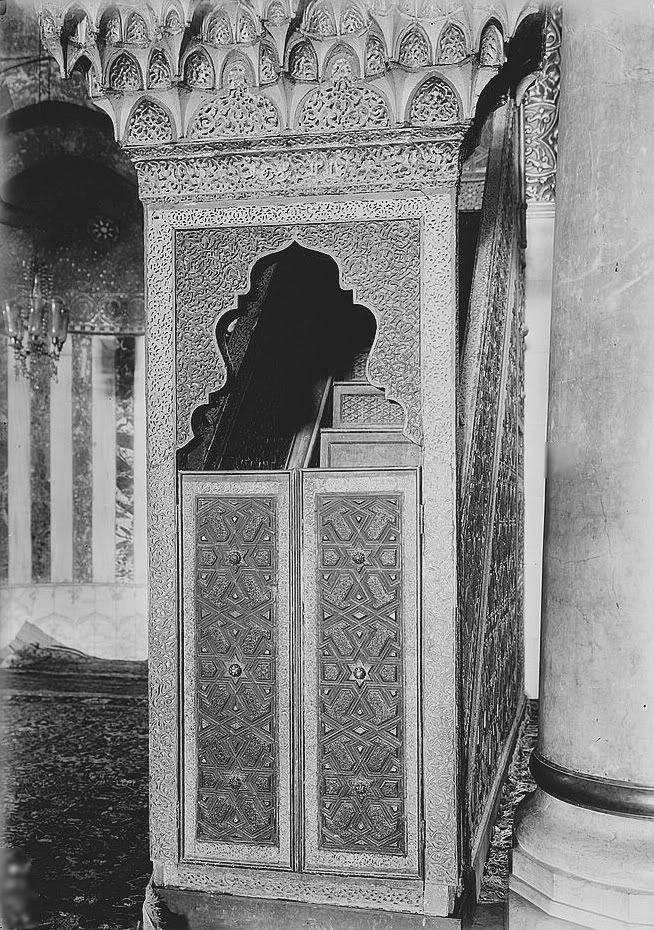
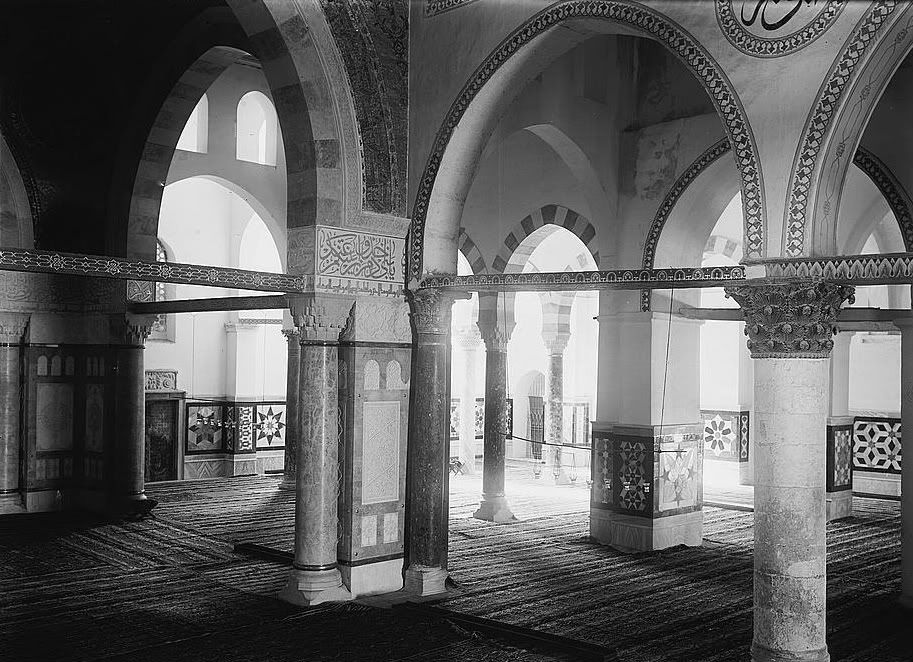





1 comment:
thank you very intresting
Post a Comment